Learn How to Write a Press Release (With Pictures)
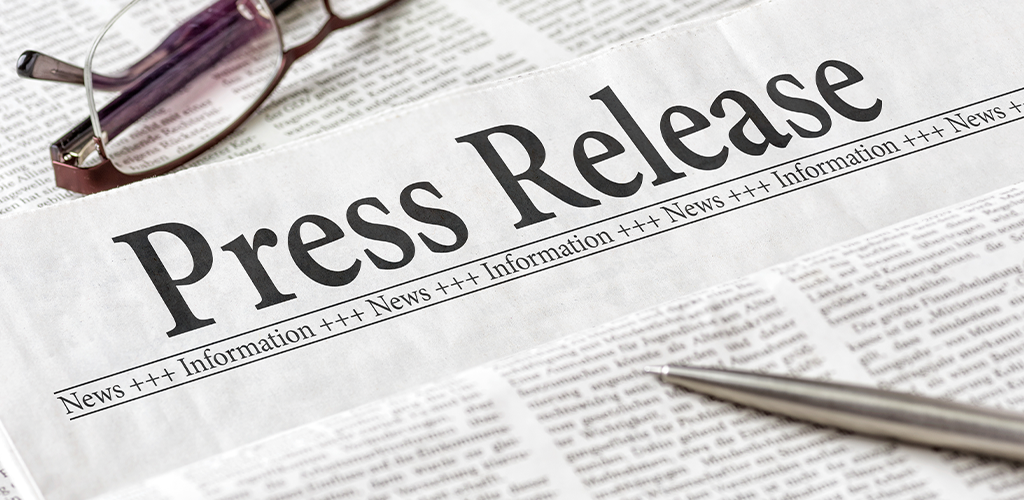
When it comes to marketing your business, a press release, otherwise known as a media release, can be incredibly important to write well. They’re your gateway to engaging the news outlets in your industry for some organic, free coverage. However, some journalists get hundreds, if not thousands of releases in a week. Anything short of amazing will simply end up in the trash bin (either digital or physical). To make your business stand out from the shuffle, follow these steps on how to write a press release:
- Learn what’s newsworthy
- Add your logo
- Use your contact information
- Tell them when the information can be released
- Write your headline
- Use a place line
- Create a stellar hook
- Add your body text
- Pop in a quote
- Leave them thinking
- Indicate the end
- Add some boilerplate
- Use correct press release formatting
- Sprinkle in some multi-media
Learn What’s Newsworthy
When writing a media release, it must be worth a journalist’s time. If the information you’re sharing with them isn’t newsworthy to begin with, it will end up in the trash heap right away. There are a few criteria to determine if your topic is newsworthy.
- Timely: The topic of your release should be about something current.
- Significance or Impact: The more people affected by your topic, the more newsworthy it is.
- Human Interest: Stories that appeal to emotion are often more newsworthy than emotion-free content.
- Proximity: If your topic doesn’t affect the people in the area or audience of the publication you have sent it to, chances are it’s a waste of both their time and yours.
- Prominence: If your release involves a prominent member of society (for example, a celebrity), it becomes more newsworthy.
- Oddity: The weirder the topic, the more likely it is to be newsworthy. Don’t try to mask something normal as weird because journalists see through that tactic.
- Relevance: If you’re writing about a topic that’s currently relevant in the news cycle and adds to public discourse, it may be considered newsworthy.
- Conflict: Drama sells. If your press release involves some sort of conflict, it increases in newsworthiness.
Add Your Logo

Generally speaking, your logo should go at the top of your page. You can put it in the left or right corner, or right in the middle. The logo helps a news agency immediately recognize who sent them the release. It’s one of the easiest steps when learning how to write a press release.
Use Your Contact Information

The next thing to add is your contact information. If the journalist intends to pursue your topic further, they’re likely going to want to set up an interview. Use the contact information for the person most qualified to answer their questions (which may not always be you). Give the name and title of the person, as well as the best way to reach out to them.
Tell Them When the Information Can Be Released
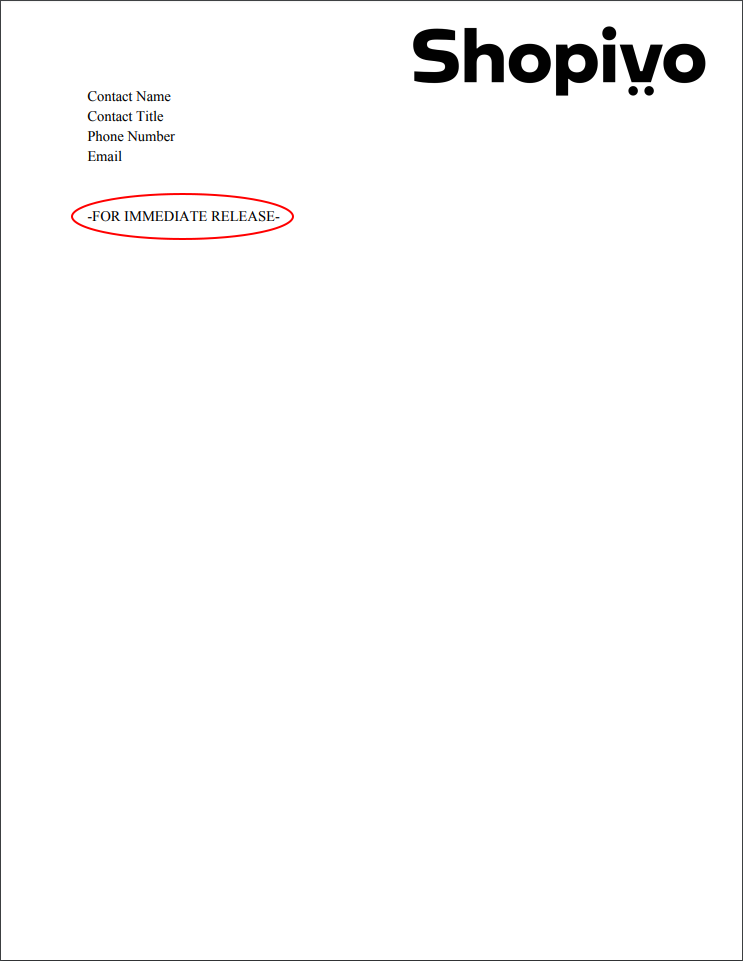
Most often, you’ll be writing about information that can be released right away, but sometimes the contents are confidential until a certain date. Whichever is the case, let the news agency know with a line at the top that either states -FOR IMMEDIATE RELEASE- or -EMBARGOED UNTIL X-DATE-.
Write Your Headline
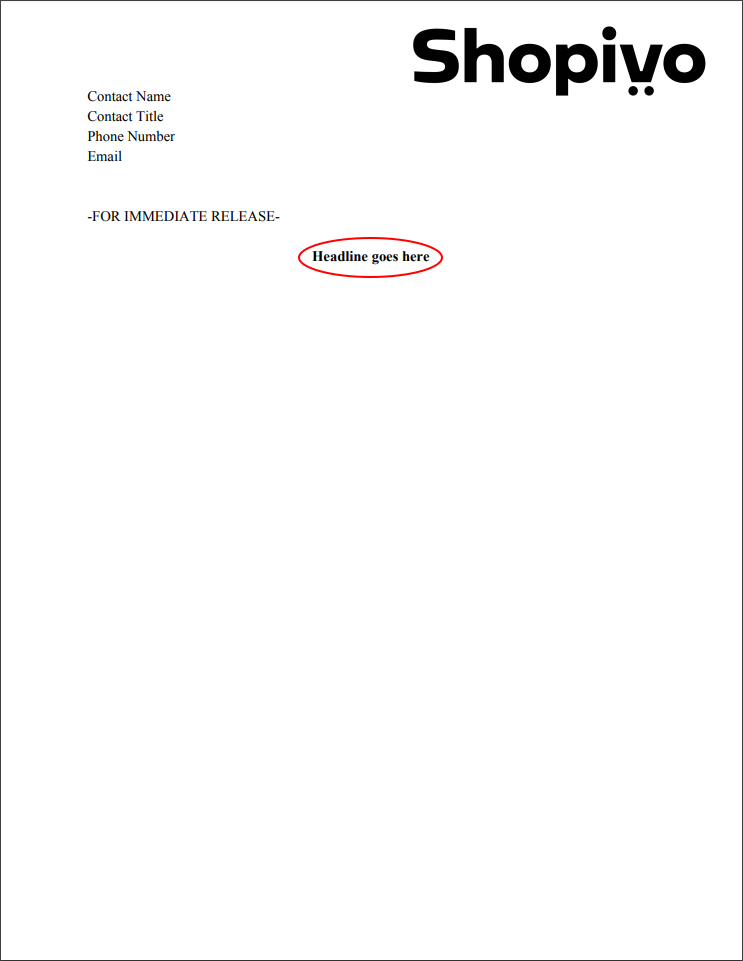
The headline should be a short but catchy glimpse into what the press release is actually about. When writing a headline, do NOT use full sentence format, and only capitalize the first word and any proper nouns. In general, headlines are in boldface and centred on the page.
Use a Place Line
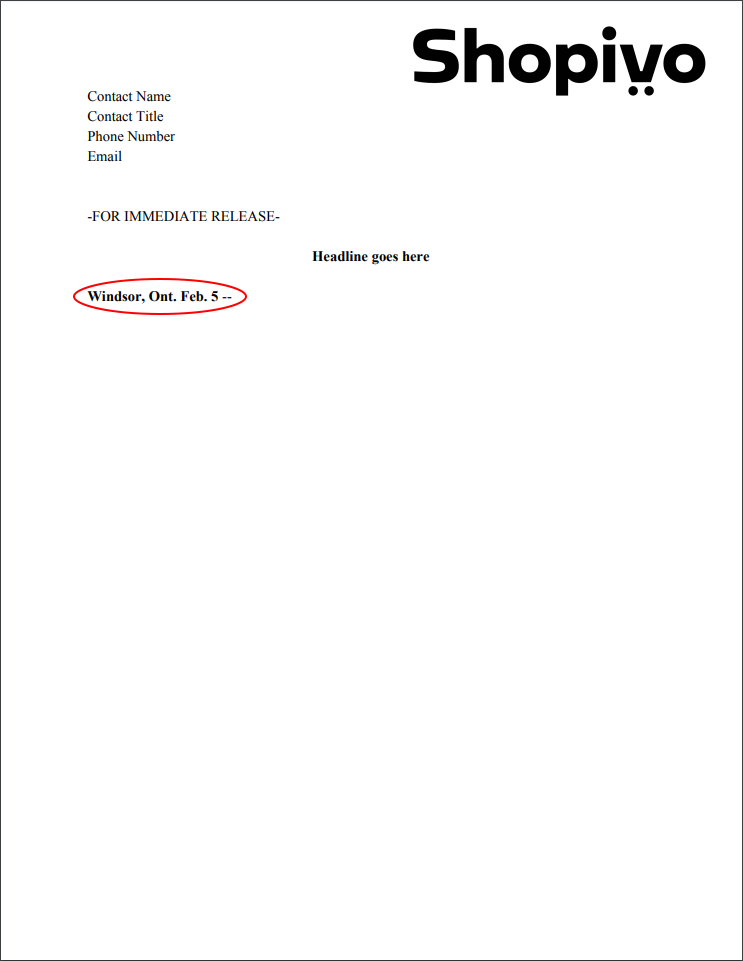
Place lines tell the agency where your organization is located (or where the topic at hand is writing about, if your business operates in more than one city). Write down the name of the city and the correct abbreviation of your province or state where applicable. Some place lines also include the date of writing. At the end of your place line, use a double dash to separate it from the rest of the press release, and bold the entire place line.
Create a Stellar Hook
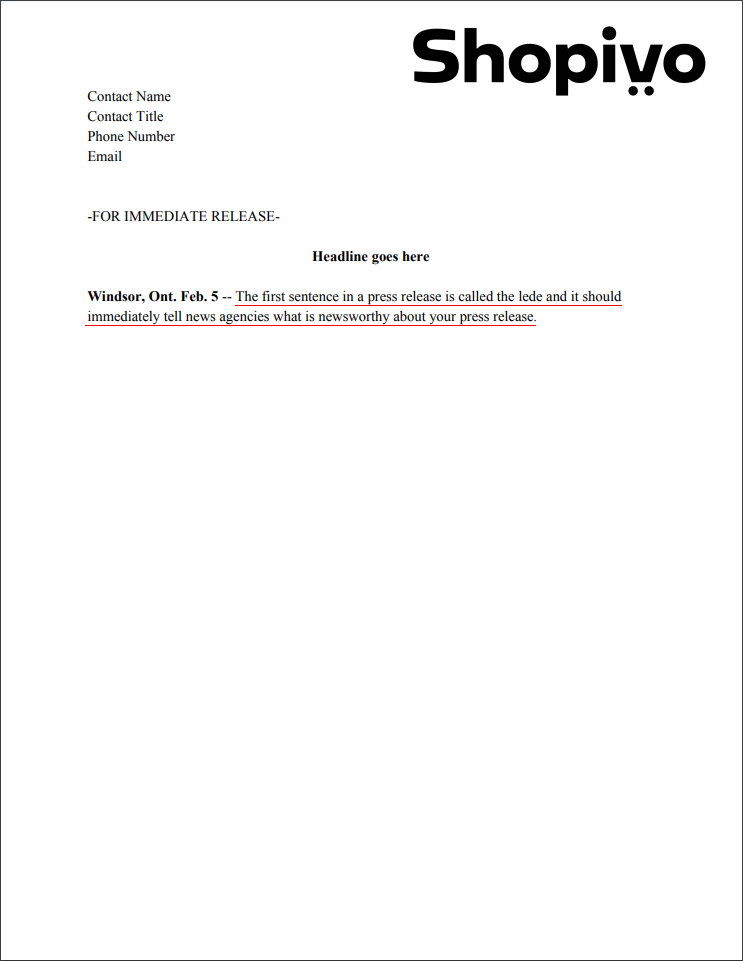
The first sentence is called the “lede” or “hook.” With this sentence, you should both interest the journalist and tell them the most important detail or two about your topic. This single sentence will help the reader determine if the release is newsworthy or not. If it isn’t, they’ll stop reading here.
Add Your Body Text
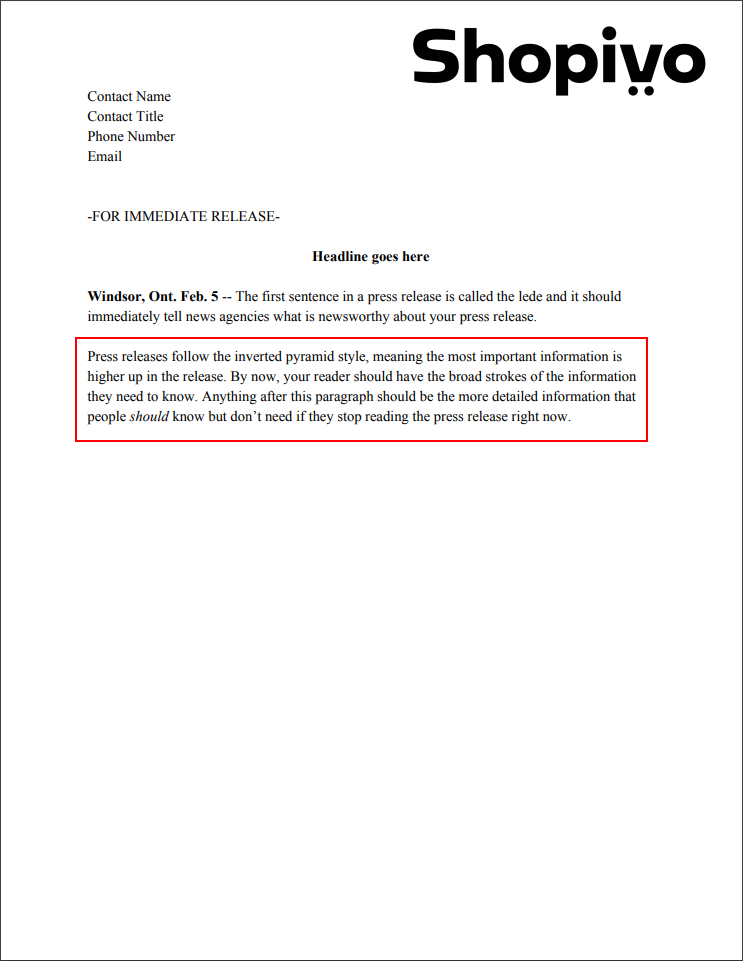
After your hook, you need to fill in the remainder of the details. Media releases are most frequently written using a method called the “inverted pyramid.” This means the most important information comes first and you work your way to the less important details. Formatting your release this way ensures that even if the reader stops halfway through, they have the most important information already.
Pop in a Quote
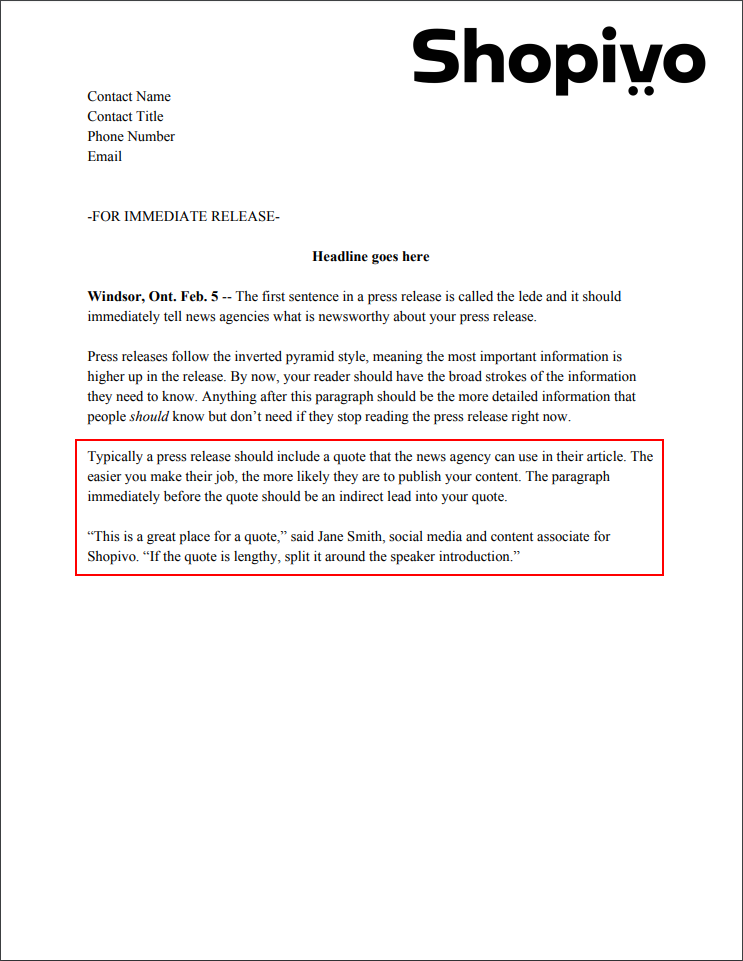
Your ultimate goal is to earn news coverage. You’re more likely to succeed in this goal if you make the job of the journalist as easy as possible. By adding a quote, you save them time from having to chase down someone in your organization to talk to.
Leave Them Thinking
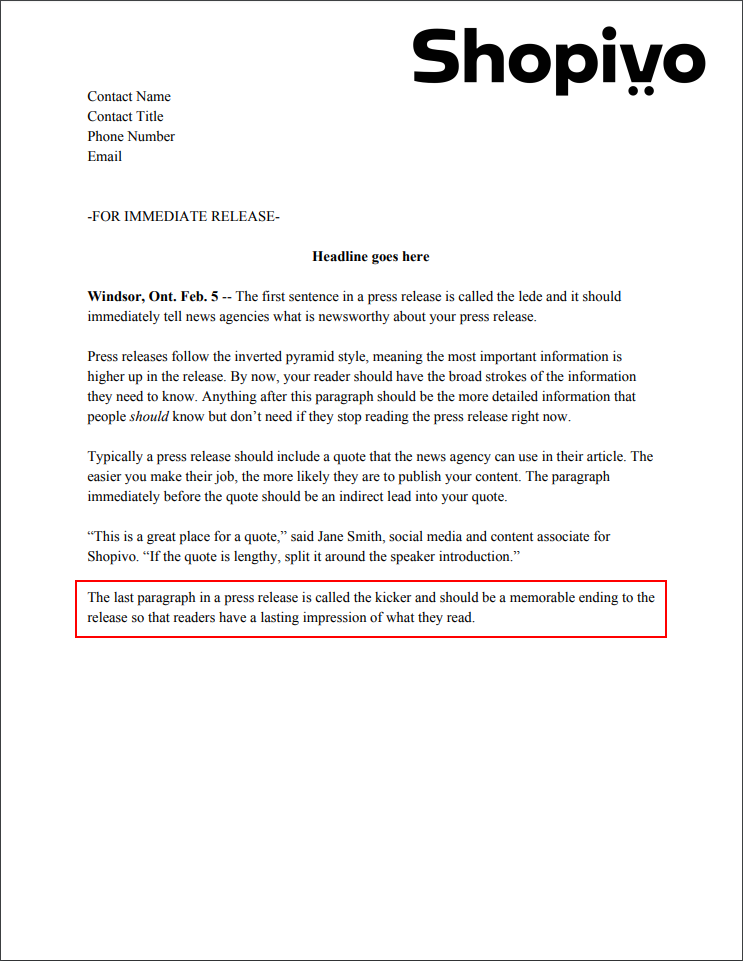
The last paragraph or sentence of your release is call the kicker. Make it as strong as possible because it’s the last and often most memorable impression you leave your reader with.
Indicate the End
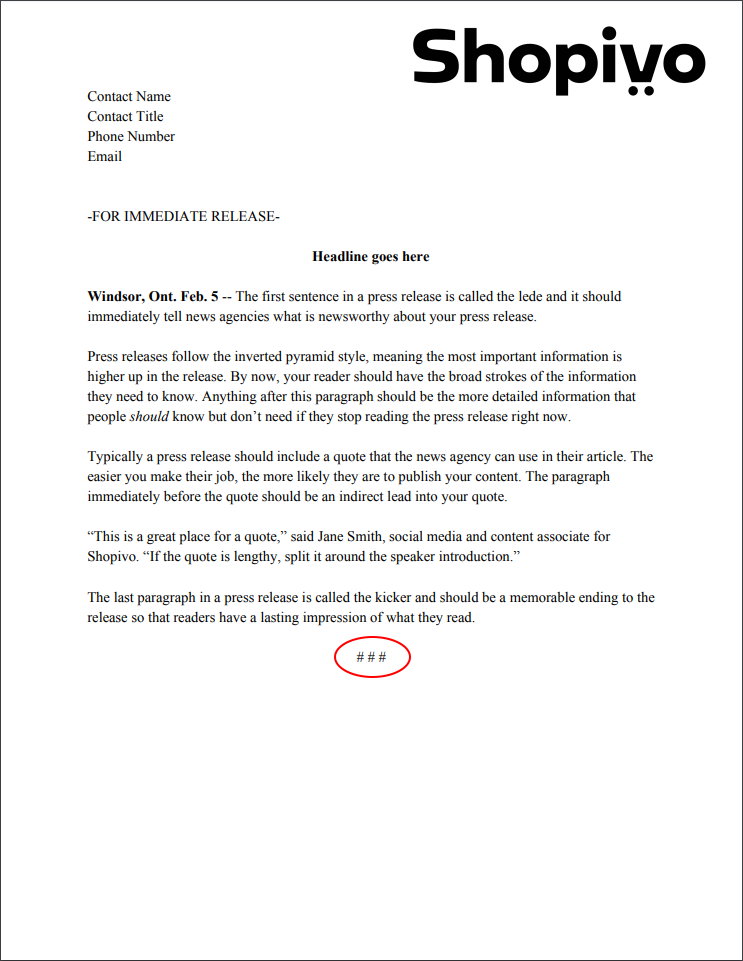
A typical release is only a page in length but some may be longer. Indicate that the journalist has the entirety of the release by placing three “#” marks at the end of your kicker.
Add Some Boilerplate
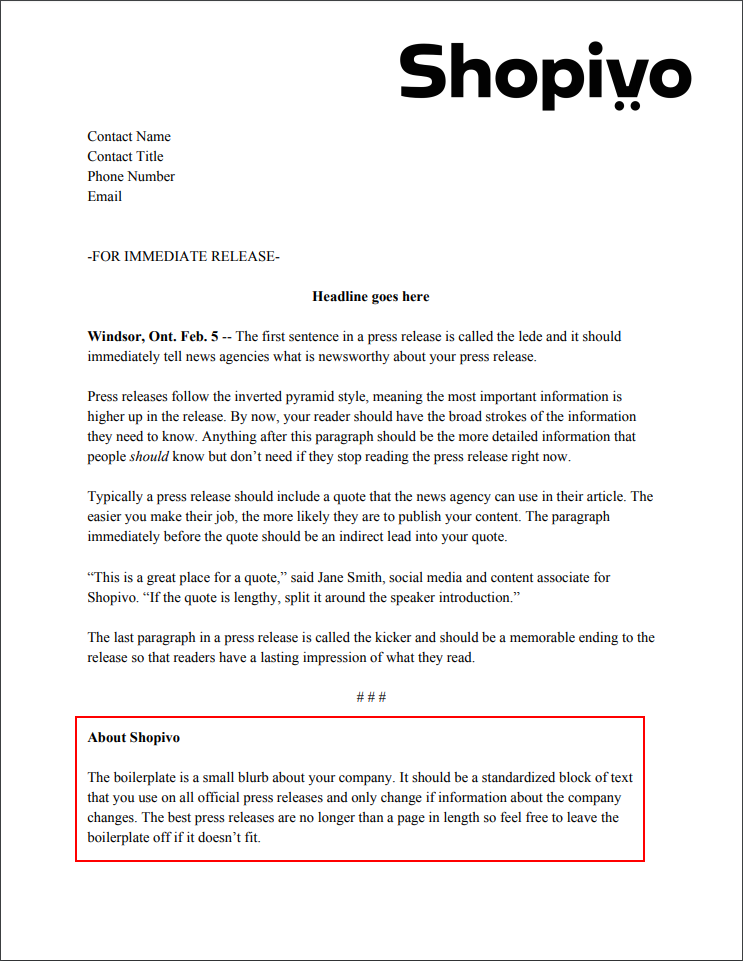
Some organizations like to add a small blurb about their company at the end of the page. This block of text is a standardized paragraph about the basic details a journalist might want to learn about a business. Boilerplate text is optional.
Use Correct Formatting When Learning How to Write a Press Release
Like we mentioned earlier, the easier you make a journalist’s job, the more likely they are to want to pursue your release. With that in mind, take a look at the formatting standards for the news agencies you’re submitting to. In Canada, most journalists follow a set of rules called the “Canadian Press Style.” In America, their guidelines are dictated by the Associated Press. The more closely your writing follows the relevant guidelines, the better.
Sprinkle in Some Multi-Media
In a 2018 report, it was found that 49% of surveyed journalists would be more interested in a release if it contained an infographic. Another 13% of journalists said they would pay more attention to one if it contained a video or if the entire release was formatted as a video. By using these forms of multi-media, you can increase the likelihood of catching the right attention.
The press release is an important part of your marketing toolbox. Take your time when learning how to write a press release by practicing writing and formatting, and always write more than one draft, to make it as amazing as possible.
Visit Shopivo and stay tuned for exciting news and updates! Sign up for our emails and stay up-to-date on new developments and features.
